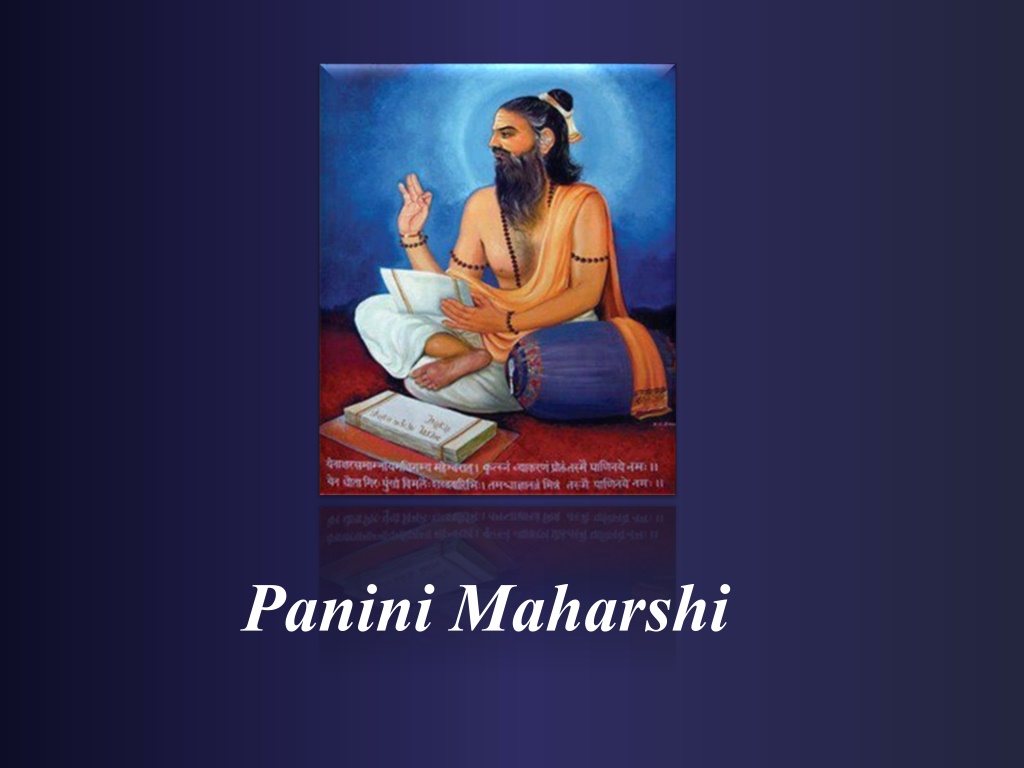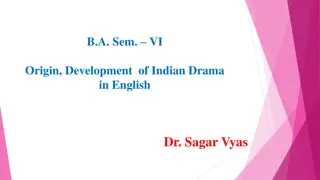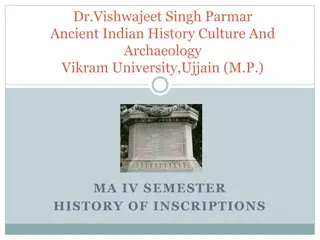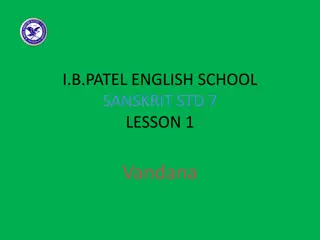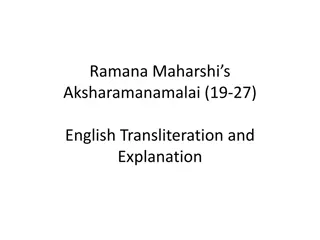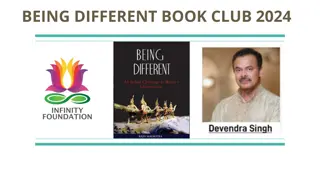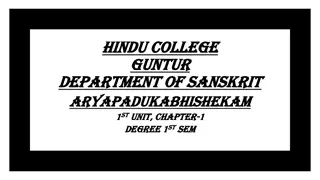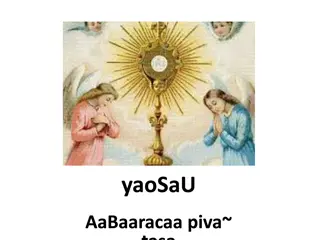Panini Maharshi: The Foremost Grammarian of Sanskrit Language
Panini Maharshi, the first and foremost grammarian of the Sanskrit language, is best known for his work Asthadhayai, a book on grammar which is highly revered among scholars and learners. His scholarly approach and foundational work in grammar have made him a prominent figure in linguistic studies. The Asthadhyayi consists of around 4000 sutras and covers various aspects of grammar in a scientific manner. Panini's contribution to Sanskrit language and grammar is essential, and his work continues to be studied and appreciated by language enthusiasts worldwide.
Download Presentation

Please find below an Image/Link to download the presentation.
The content on the website is provided AS IS for your information and personal use only. It may not be sold, licensed, or shared on other websites without obtaining consent from the author. Download presentation by click this link. If you encounter any issues during the download, it is possible that the publisher has removed the file from their server.
E N D
Presentation Transcript
PANINI MAHARSHI Panini is the first and foremost grammarian of sanskrit language Asthadhayai is the book on grammar written by him Asthadhayai is most famous among the scholars and learners of sanskrit. The person who learns this book his foundation is considered very storng.
He has been also called by other names such as hahika ,siloni , dhakshiputhra etc And he belong to the gandharidesha The there are different opinions about his time period according to the western scholars place him around 350 B.C. where as the indian scholars place him around 600-500 B.C. Asthadhyayi created around 450 430 B.C.
The grammarian panini is endowed with the scholarly apporach of te earlier sages and even the scholars who excited prior to him . The boook asthadhyayai is called by few other names aslo. The book has around 4000 sutras (grammatical formulae). The book is divided into eight chapters .ecah chapter consisting of four sections each. The book is a glossary of grammar .it deals with nouns , verbs ( active & passive ) ,cases ,samasa (compounds ),sandhi (coalescence),participles and other essentials of grammar in a scientific manner .during the period of panini sanskrit wass the spoken language nof the people .hence we find that who studies asthadhayai masters the sanskrit language
V V Maheshwara sutrani
Maheshwara sutrani The Shiva Sutras (IAST: ivas tr i) or M he varaS tr i are fourteen verses that organize the phonemes of Sanskrit as referred to in the A dhy y of P ini, the foundational text of Sanskrit grammar. Within the tradition they are known as the Ak arasam mn ya, "recitation of phonemes," but they are popularly known as the Shiva Sutras because they are said to have been revealed to P ini by Shiva. They were either composed by P ini to accompany his A dhy y or predate him. The latter is less plausible, but the practice of encoding complex rules in short, mnemonic verses is typical of the sutra style.
(Devan gari) . . . . . . . . . . . . . . (Telugu) 1. 2. 3. 4. 5. 6. 7. 8. 9. 10. 11. 12. 13. 14. (Kannada) 1. 2. 3. 4. 5. 6. 7. 8. 9. 10. 11. 12. 13. 14. IAST 1. a i u 2. K 3. e o 4. ai au C 5. ha ya va ra 6. la 7. a ma a a na M 8. jha bha 9. gha ha dha 10. ja ba ga a da 11. kha pha chha ha tha ca a ta V 12. ka pa Y 13. a a sa R 14. ha L Each of the fourteen verses consists of a group of basic Sanskrit phonemes (i.e. either open syllables consisting either of initial vowels or consonants followed by the basic vowel "a") followed by a single 'dummy letter', or anubandha, conventionally rendered Roman transliteration and named 'IT' by P ini. by capital letters in
From these 14 verses, a total of 281 pratyhras can be formed: 14*3 + 13*2 + 12*2 + 11*2 + 10*4 + 9*1 + 8*5 + 7*2 + 6*3 * 5*5 + 4*8 + 3*2 + 2*3 +1*1, minus 14 (as P ini does not use single element praty h ras) minus 10 (as there are 10 duplicate sets due to h appearing twice); the second multiplier in each term represents the number of phonemes in each. But P ini uses only 41 (with a 42nd introduced by later grammarians, ra =r l) praty h ras in the A dhy y . The Shiva Sutras put phonemes with a similar manner of articulation together (so sibilants in 13 a a sa R, nasals in 7 m n M). Economy (Sanskrit: l ghava) is a major principle of their organization, and it is debated whether P ini deliberately encoded phonological patterns in them (as they were treated in traditional phonetic texts called Pr ti akyas) or simply grouped together phonemes which he needed to refer to in the A dhy y and which only secondarily reflect phonological patterns (as argued by Paul Kiparsky and Wiebke Petersen, for example). P ini does not use the Shiva Sutras to refer to homorganic stops (stop consonants produced at the same place of articulation), but rather the anubandha U: to refer to the palatals c ch j jh he uses cU.
PRESENTED BY S . MADHAVI Faculty of Sanskrit AVANTHI DEGREE & P.G COLLEGE THE END
